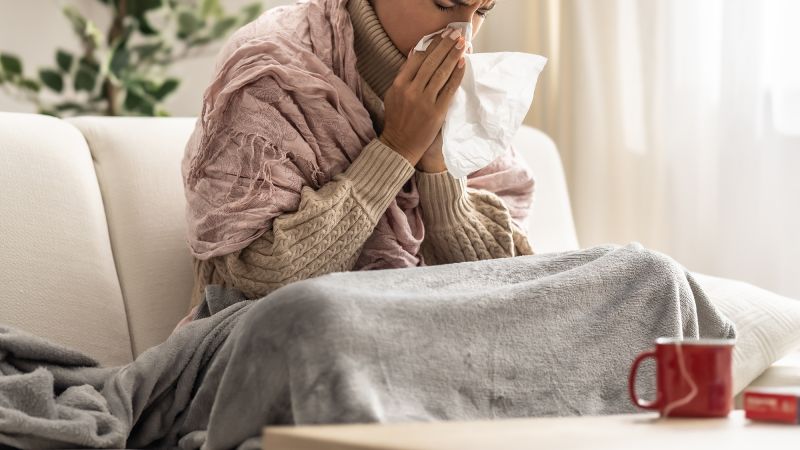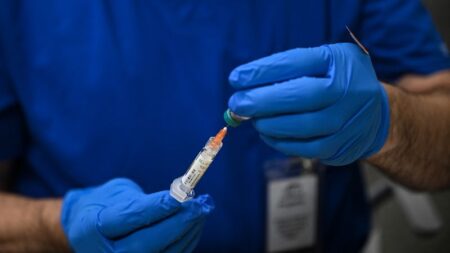The country is currently experiencing a significant surge in flu cases, marking a second peak this season. Initially, the number of doctor visits for flu-like symptoms had shown a decline earlier in the year, but this trend has reversed dramatically. By the end of last month, flu-related visits surged past peaks recorded in the previous season, leading to a staggering 30% test positivity rate. Public health officials emphasize that the peak season for flu typically extends for several more months, which raises concerns about how this outbreak will evolve.
According to estimates from the US Centers for Disease Control and Prevention (CDC), there have been approximately 20 million confirmed flu cases in the United States this season, resulting in over 11,000 fatalities. The rates of hospitalization due to flu are alarming as well, with an estimated 38,255 people hospitalized just last week alone. This is compounded by the fact that other viruses, including the one responsible for COVID-19, are also circulating widely, evidenced by wastewater testing revealing elevated levels of the virus across the nation, exceeding those levels observed at the onset of winter.
Amid this respiratory illnesses season, some progress has been made with new tools. Consumers now have access to over-the-counter testing kits that enable them to determine whether their symptoms are due to COVID-19 or influenza. These tests can be found in most pharmacies or purchased online, allowing individuals to quickly identify the cause of their illness without waiting for a clinic appointment or standing in line. This convenience is particularly vital as healthcare systems are strained during peak flu periods.
These home tests represent a pioneering development, being the first viable option for at-home flu testing. Users can perform nasal swabs and view results in a mere 15 to 30 minutes, depending on the specific test utilized. Various companies have secured emergency use authorization from the US Food and Drug Administration (FDA) for these combination tests. For instance, one test manufactured by Healgen has received broader marketing authorization beyond emergency use.
Most of these tests utilize rapid antigen technology, enabling them to detect specific viral components and alert users of their presence. Another notable product, from Pfizer, employs RT-LAMP technology, which amplifies the genetic material of the virus for identification purposes. While these tests are groundbreaking, they may not identify every possible respiratory virus; however, they represent a crucial step toward providing immediate diagnostic capabilities for flu at home.
In light of symptoms and testing results, health experts advise caution. If an individual displays symptoms but receives a negative test result for both flu and COVID, it’s possible they may be experiencing another kind of infection, have tested too early, or received a false negative. As such, the CDC recommends consulting a healthcare provider for further guidance.
Health professionals stress that individuals who test positive for either COVID-19 or the flu should self-isolate to mitigate the risk to family members and should reach out to their healthcare provider, especially if they have pre-existing health concerns. Dr. Sarah Nosal, a primary care physician in the Bronx, highlights the significance of isolation in preventing further transmission of the disease.
Moreover, the immediate availability of at-home tests may expedite treatment for those who fall ill. According to Dr. William Schaffner, an infectious disease expert, many patients tend to delay seeking medical attention, believing they will improve on their own. This postponement can affect the timeliness and effectiveness of treatments, which are most beneficial when administered within the early stages of symptom onset.
Differentiating between flu and COVID-19 is essential. They pose different risks, create different treatment pathways, and come with varying symptom expectations, with COVID-19 having the potential for more severe complications and the risk of long COVID in certain cases. Antiviral treatments are available for both viruses, such as Tamiflu for flu and Paxlovid for COVID-19, but their efficacy is contingent on timing, ideally administered within the first two days of symptoms.
Mara Aspinall from Arizona State University noted the increased visibility of these combination tests in pharmacies nationwide. The availability of flu tests at home is unprecedented, and while user adoption may take time, many consumers start to become aware of these options.
Recent purchasing trends indicate an uptick in demand for these home testing kits, according to Michael Mina, a leading epidemiology and infectious disease expert. However, with flu cases on the upward trajectory, there remains skepticism about how effectively people will utilize these tests.
Pricing could pose a significant barrier, as these tests are often not covered by insurance plans. For instance, Walgreens sells a pack of two tests for around $30. Many individuals are hesitant to pay out-of-pocket for these products, according to expert opinion. As Mina notes, removing financial barriers could enhance access and encourage individuals to utilize at-home testing while managing their health from the comfort of their homes.












